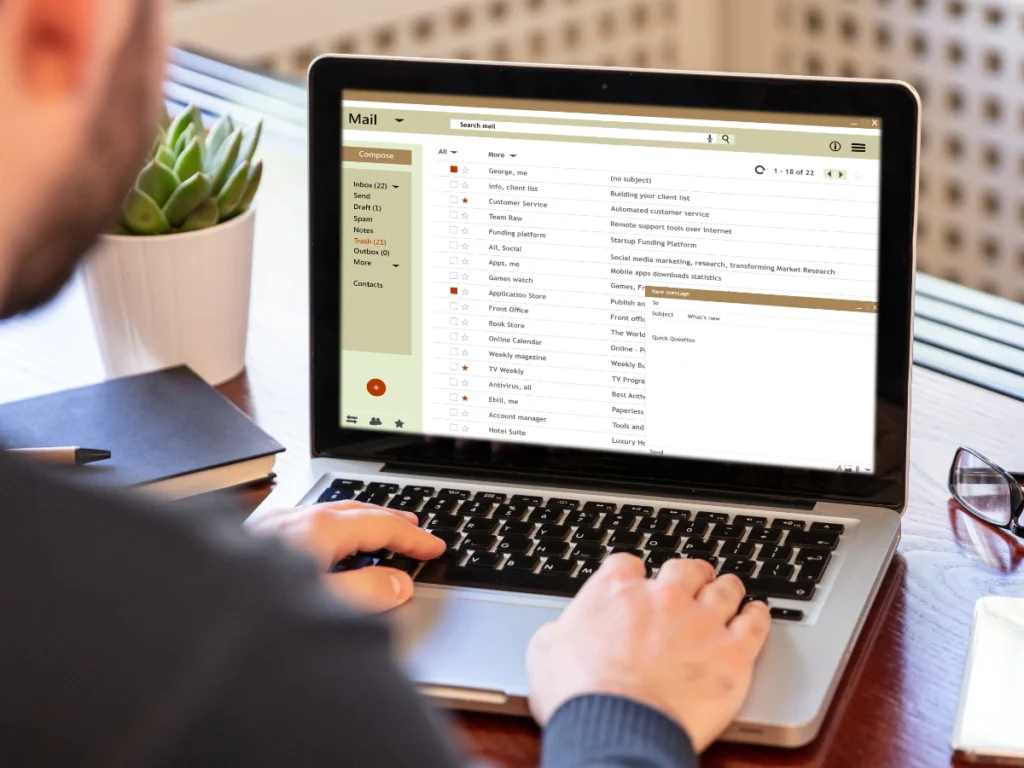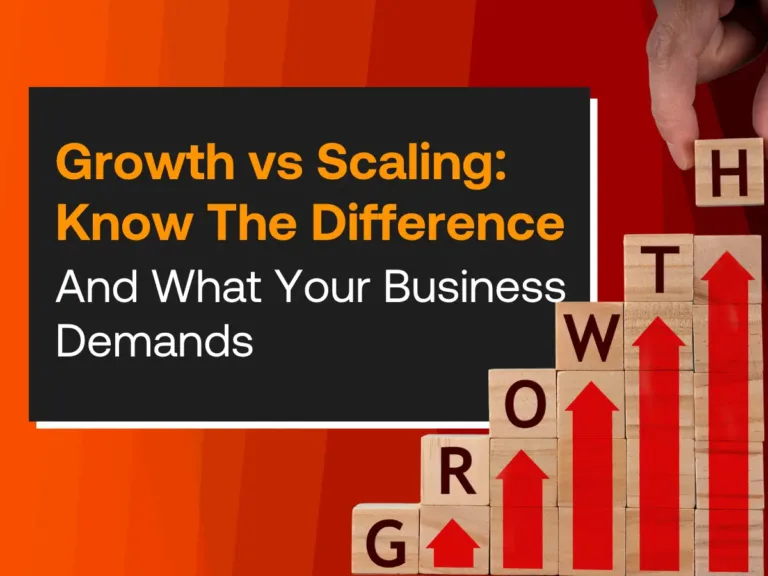
Email list segmentation is an undeniably effective email marketing technique. It has the power to shift your emails from bland to effective.
If a change like that interests you, then stick around. In this article, we’ll break down email list segmentation and outline the steps you need to take to make it work for your business.
Let’s get right into it!
What is Email List Segmentation?
Email list segmentation is the process of dividing your email subscribers into smaller groups based on specific criteria. The criteria could be demographics, behaviors, interests, locations, or any other factors that influence your subscribers.
Dividing your email list into segments allows you to send more relevant and personalized emails. With this strategy, your subscribers will get content that matches their needs and interests. And not general content that may not relate directly to them.

Why is Email List Segmentation Important?
Here are some of the key benefits of email list segmentation:
- Improved engagement and open rates: Segmenting email lists leads to a boost in key email marketing metrics. When your emails align with the interests of your subscribers, they are more likely to open and read them. This leads to higher open rates, click-through rates, and conversion rates.
- Better personalization and customer experience: Sending emails based on your subscriber’s behaviors or preferences, makes them feel valued and understood. It improves their customer journey and adds a sense of ease to the experience.
- Increased customer loyalty: Brands that provide good customer experience make customers loyal to them. And by sending relevant emails, these brands can build trust and long-term relationships. Doing this encourages repeat purchases.
- Avoid the spam folder: No one likes to receive irrelevant emails—your subscribers least of all. Irrelevant emails often get ignored or marked as spam. While segmented emails have more relevant content. And people are more likely to open emails with relevant content. Email list segmentation improves sender reputation and deliverability.
- Higher ROI: Personalized emails push people to take action. This could be signing up for a webinar, making a purchase, or booking a demo. Segmenting email lists ensures every email sent has a higher chance of converting. This leads to a better return on investment (ROI) in email marketing.
- Lower costs: Email list segmentation helps you identify inactive subscribers. Keeping them on costs you money on your email marketing software or customer relationship management platform. It might be a good idea to let these people go and focus on people who have shown interest in what you offer.
The 4 Market Segmentation Types for Email List Segmentation
Email list segmentation is an effective email marketing strategy. It’s a great way to connect with your audience using personalized and relevant content that speaks directly to them.
This improves engagement and conversion rates. Dividing your subscribers into groups allows you to send the right content to the right people.

Market segmentations are small, targeted groups compiled based on specific criteria. There are four major types used for email list segmentation. These are:
1. Demographic Segmentation
This is one of the most widely used market segmentation types. The demographics of your audience describe the most basic things about them. Marketers use them to build buyer personas. A buyer persona is an idealized depiction of who your customer is.
It describes your dream customer in detail. This allows you to create content that is specific to them. The demographics used for B2C and B2B businesses are different.
B2C demographics include:
- Age
- Gender
- Marital status
- Number of children
- Religion
- Annual/Monthly Income
- Ethnicity
- Occupation
- Education level
Segmenting email lists based on these factors ensures that your marketing efforts target specific people. This means each piece of content speaks to the specific needs of each group.
For example, let’s say there’s a clothing company trying to segment email lists based on gender. The emails sent to women would be different from the emails sent to men. The company can further segment the email list by focusing on age groups.
In this case, they could send targeted emails to:
- Women above 25 but below 40
- Women above 40
- Men above 25 but below 40
- Men above 40
And just like that, they’ve created four market segments. Considering more demographics allows companies to create even more targeted content.
B2B demographics include:
- Job title
- Industry
- Company size
B2B demographic segmentation ensures that your content aligns with the recipient’s role in the company. And with the goals of said company.
For example, when segmenting email lists by company size, the solutions you offer will typically be more budget-conscious for small businesses. However, larger enterprises may get emails about advanced, more expensive solutions.
2. Behavioral Segmentation
As its name implies, behavioral segmentation is about analyzing the behaviors of your subscribers. It focuses on how your audience interacts with your brand. By analyzing their actions, you can create targeted emails that match their level of interest.
These are the factors to consider for behavioral segmentation:
- Customer journey stage: The customer journey describes the series of processes that lead your customer to make a purchase. Email list segmentation based on this targets customers at where they are on this journey.
For example, new subscribers who are likely in the awareness or consideration stage might receive welcome emails. While subscribers who are near the decision stage get mouthwatering deals to encourage them to make a purchase.
- Email Engagement: You can segment your emails based on your subscriber’s engagement. For this, you’ll need to look at factors like open rates, click-through rates, and inactivity.
Subscribers who consistently read your emails may be more ready to convert. While inactive subscribers might need a little nudge. You can give them that push by creating tailored re-engagement email campaigns.
- Website Activity: You can track website page visits and segment email lists based on this. For example, if someone visits a product page, it shows a potential interest in that product.
Armed with this information, you can send a relevant follow-up email with more details about the product. You can even add a special discount to make them more inclined.

- Purchase History: Analyzing what your customers bought in the past, shows you what they might buy in the future. It gives you insight into their behaviors and helps you predict their next steps. Email list segmentation based on purchase history is especially effective for e-commerce brands.
Information on past purchases allows e-commerce businesses to upsell and cross-sell. For example, a jewelry brand can advertise complementary earrings to go with the necklace a customer bought. They can also send personalized recommendations and maintenance tips for the item.
Purchase history works for other businesses as well. For example, a SaaS brand can offer onboarding tips to new software subscribers.
- Occasion or timing: Events like holidays and birthdays are another great chance to reach your audience at the right time.
For example, your business could offer a special Valentine’s offer for couples.
- Customer loyalty: Everyone loves to feel like they’re getting something exclusive. You can offer exclusive offers, discounts, or rewards to loyal customers. This makes them feel special and appreciated.
3. Psychographic Segmentation
Here, email list segmentation focuses on your customer’s why. Psychographic data provides insights into the thought process behind each purchase. Understanding the motivations of your subscribers helps you send emails that speak to their desires and concerns.
These are some factors to consider for psychographic segmentation:
- Interests: Your customers’ interests—their hobbies and passions—influence their shopping decisions. Someone passionate about fitness may be more inclined to buy health-related products or services.
- Values: We all have personal values that affect our choices. Aligning your email campaign with your customers’ values allows you to build stronger relationships.
For instance, people who care about sustainability will likely be more interested in eco-friendly solutions.
- Pain Points:Segmenting email lists based on specific pain points is a solid approach. To do this, you need to know your customers. What are their struggles and fears? What are their goals and what stands between them and those goals?
Here’s an example: Let’s say you run a company that helps startups scale. Founders who are struggling to scale their businesses might appreciate case studies on how similar businesses grew.
- Attitudes: This can be a bit more difficult to figure out. But you can use surveys, tools, and social media activity to get the information you need. Learning your customers’ attitude towards your business, lets you know the kind of emails they need.
- Lifestyle: Lifestyle choices impact purchase decisions. For example, a time management app can send emails that target people trying to fix their sleep schedules or improve productivity.
- Social status: People of different social statuses have different priorities. Someone fresh out of college with crippling student loan debt would be more interested in affordable options. While someone with more money might be open to more expensive options.
4. Geographic Segmentation
This is location-based email list segmentation. It’s a straightforward way to group your subscribers and send targeted emails. It’s a particularly useful email marketing strategy for local businesses. You can tailor your emails to fit relevant events in your location.
Global businesses can also use geographic segmentation. By creating content that targets specific locations, you can maximize your reach and connect with diverse audiences.
To segment email lists based on geographic factors consider:
- Location
- Population
- Culture
- Time zones
- Weather patterns
- Language(s) spoken
- Regional trends
- Local events
For example, if you want to segment the email list with time zones in mind, you can schedule emails based on when recipients are most likely to engage.
How to Implement Email List Segmentation for Maximum Impact
After that thorough breakdown, it’s time to put what you’ve learned into practice. Let’s take a look at some email list segmentation best practices.
1. Collect Customer Data
The first step is to gather customer data. This information will help you segment your email list based on various factors. There are many touchpoints for collecting data. These include:
- Sign-Up Forms: When someone subscribes to your email list, you can ask for information. This could be their job title, industry, or interests.
- Surveys: You can use surveys to gather feedback. Find out more about the people in your email list segments and refine your strategy.
For example, a survey sent to an email list segment of men over 25, might reveal that they prefer to consume short-form content. Now you know that you need to shorten the length of your emails.
2. Use Automation Tools for Effective Email List Segmentation
There are many tools for email marketing automation. These tools simplify email list segmentation and personalization. They make it easy to collect data and send emails that target specific groups. Popular automation tools include:
3. Create Personalized Email Campaigns Based on Segments
All your efforts will be for nothing if you don’t personalize your emails. Personalization is one of the goals of email list segmentation. Dividing your audience into segments and understanding the needs of each segment allows you to send emails that feel more personal.
You can make things even more personal by:
- Adding the recipient’s first name: Addressing your subscribers by their first name makes the email more engaging and personal. Instead of “Hi there,” use “Hi [First Name]”. This creates a stronger connection.
- Sending automated follow-ups based on actions: You can send emails that are in tune with user actions. This enhances the customer experience. For example, if a subscriber downloads an ebook, you can send a follow-up email with additional content.
- Mentioning their interests: Interests fall under psychographic segmentation. After segmenting your email lists based on interests, you can send relevant emails to everyone in that segment.
- Referencing an event in their location: This is another way to build a connection with your subscribers. Geographic segmentation allows you to group people based on location. You can use this information to provide region-specific offers. Or you can reference an event or holiday that is unique to that location.
4. A/B Testing and Optimization
You should refine your email list segmentation strategy regularly. A/B Testing helps you do this. It helps you identify what works best for different audience groups.
Here’s how to optimize your email list segmentation strategy:
- Test different segments: Try experimenting with different segments to see which groups respond best to your emails. This is a great way to find out who is really interested in your products or services.
- Monitor email engagement: Track email performance to figure out what works and what doesn’t.
- Recompile your list: Regular research helps you refine segments and maintain relevance. Over time, you might need to move subscribers from one email segment to another. As their behaviors, needs, and lifestyle choices change, their segments should change too.
- Open rate analysis: Analyzing open rates helps you know which subject lines work best. It also helps you know the best time to send emails for maximum engagement.
- Click-through rate: This measures how many recipients click on links within your email. Analyzing this tells you which type of content drives action.
Continuous testing and optimization ensures that your email list segmentation strategy remains effective. This means higher engagement and conversion rates.
Email List Segmentation FAQ — Frequently Asked Questions
What is the difference between email lists and segments?
An email list is simply a list of subscribers. While an email segment is a group of subscribers compiled based on similar characteristics. Email list segmentation is when you take your email list and break it into email segments.
What is a list segmentation?
List segmentation is the process of dividing an email list into smaller, targeted groups (segments). This email list segmentation helps businesses send personalized and relevant content to different audience groups.
How to segment email lists?
To segment your email list, you’ll need to gather customer data. Then group customers based on similarities in data. You can group customers with the same demographic, geographic, psychographic, or behavioral traits.
This allows you to send targeted and relevant emails. That’s the goal of email list segmentation.
What are the 5 types of market segmentation?
Demographic, behavioral, psychographic, geographic, and firmographic are the 5 types of market segmentation.
We’ve already explained the first four. They’re the most common market segments. Firmographic segmentation analyzes the factors influencing a company, not individual factors. B2B email list segmentation needs firmographic data.
What are the 4 major categories of customers?
We can divide customers into 4 major categories. These are new customers, loyal customers, impulse customers, and discount customers. Email list segmentation allows you to send the right emails to each type of customer.
Wrap-Up: Mastering Email List Segmentation for Business Growth
Email list segmentation is the key to maximizing your email marketing efforts. Stop sending random emails to random people. And start sending targeted emails to specific people.
That’s the best way to make your emails convert!
If you need help getting started, feel free to reach out. Here at Techdella, we use effective marketing strategies that boost engagement and convert readers.
Related Marketing Strategies

Top Graphic Design Tips For Getting Sales during the Holiday

A Detailed Guide on Email Marketing for Insurance Agencies



